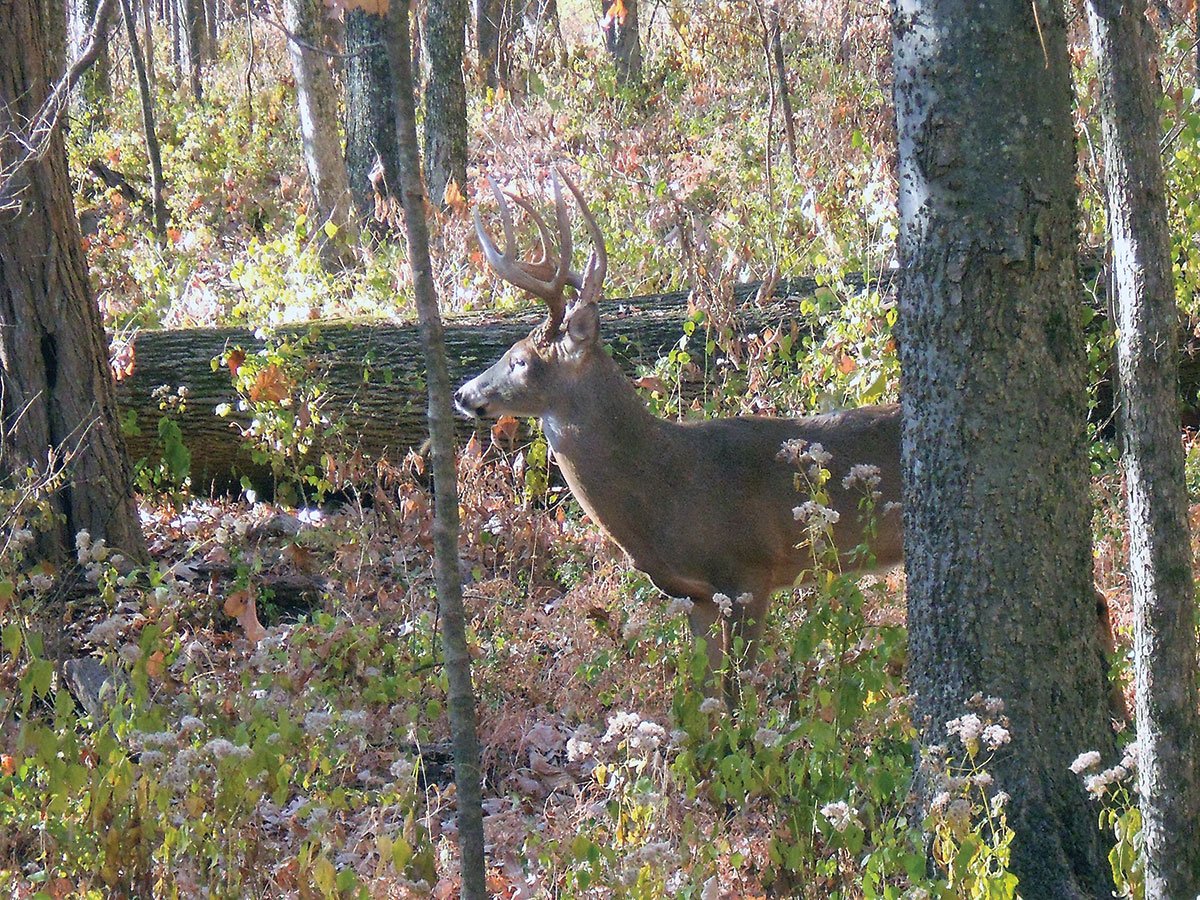By James L. Cummins
Deer management is becoming more important to hunters with each passing hunting season. Some clubs have selective harvest strategies that are used to meet certain goals. The criteria can include gender, minimum antler measurements, and minimum age. In order for these strategies to work, hunters must be able to accurately judge the deer in the field.
First, we will discuss bucks. A 1.5‑year‑old buck sometimes resembles a doe with antlers. Their muscle characteristics are not as developed as older bucks so their features include a slender neck and long, thin legs with thin hindquarters. Their average weight is 115 pounds. If the buck is closer to 2.5 years old, the hind quarters will be thicker and there will be some neck swelling present during the rut. Their average weight is 150 pounds. The average inside spread of the antlers is 12 inches.
A 3.5‑year‑old buck weighs approximately 170 pounds and the chest will appear deeper than the hindquarter area. There is noticeable swelling during the rut, but a distinct junction between the neck and shoulders. The average inside spread of the antlers is 14 inches. At 4.5 years of age, a buck will have most of his adult body size and weight. The waist will be as deep as the chest and the neck will be fully developed and blend into the shoulders. The average weight is 180 pounds with an average inside spread of 15 inches on the antlers.
A buck with a sagging belly and neck and shoulder area that appears to form one big mass is usually between 5.5 and 7.5 years of age. His legs will appear shorter, his eyes will look squinty and muscle tone will begin to decrease and he will tend to have a swayed back and a potbelly.
If the management program is focused on fawns and does, there are also ways to identify them. Most hunters will depend on body size to make the distinction between fawns and does. As the season progresses and the fawns continue to grow, they become more easily mistaken for adult does. While the average weight for a fawn is 65 pounds, the average weight for a mature doe is over 100 pounds. Also, a fawn’s forehead and snout are shorter than an adult doe’s. The head of a button‑buck will appear flattened while the doe’s head will be more rounded on top.
Does and fawns usually travel together, however, fawns are more playful and naive than adult does. If you can, wait until at least two deer are present before taking your harvest. This will allow for comparison of the behavioral and physical characteristics between the animals.
Remember, to accurately estimate the size and age of deer takes years of practice in the field.
James L. Cummins is executive director of Wildlife Mississippi, a non-profit, conservation organization founded to conserve, restore, and enhance fish, wildlife, and plant resources throughout Mississippi. Their website is www.wildlifemiss.org.



